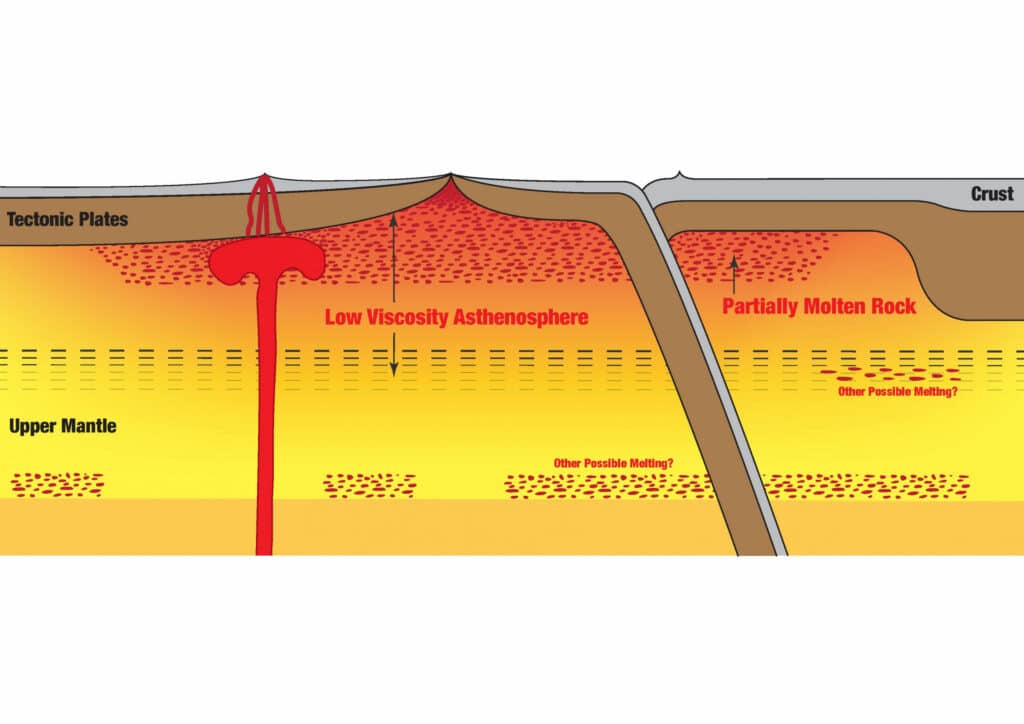Under the tectonic plates of the Earth, scientists have discovered a layer of melted rock. A recent study by a collection of universities, including Cornell, has for the first time shown the layer’s global size. Patches of the layer have long been known to exist.
The discovery of a new layer of partly molten rock under the Earth’s crust that might help settle a long-standing debate about how tectonic plates move. The molten layer is located about 100 miles from the surface and is part of the asthenosphere, which is important for plate tectonics because it forms a relatively soft boundary that lets tectonic plates move through the mantle.

The researchers found, however that the melt does not appear to notably influence the flow of mantle rocks. Instead, they say, the discovery confirms that the convection of heat and rock in the mantle are the prevailing influence on the motion of the plates.
Previous research had also suggested that molten rocks might help ‘soften’ the asthenosphere, like chocolate as it begins to melt. The new discovery, in fact, shows that it doesn’t.
“When we think about something melting, we intuitively think that the melt must play a big role in the material’s viscosity,” said Junlin Hua, a postdoctoral fellow at the University of Texas at Austin who led the research. “But what we found is that even where the melt fraction is quite high, its effect on mantle flow is very minor.”
Published Feb. 6 in the journal Nature Geoscience, the findings shed new light on the asthenosphere, which controls the physical properties and the landscape evolution on Earth, according to Gazel.
According to the research, the convection of heat and rock in the mantle is the prevailing influence on the motion of the plates. Although the Earth’s interior is largely solid, rocks can shift and flow like honey over long periods.
Co-author Thorsten Becker, a professor at the Jackson School, said, “Showing that the melt layer does not influence plate tectonics means one less tricky variable for computer models of the Earth.”
“We can’t rule out that local melt doesn’t matter. But I think it drives us to see these observations of melt as a marker of what’s going on in the Earth, and not necessarily an active contribution to anything.”
The idea to look for a new layer in Earth’s interior came while studying seismic images of the mantle beneath Turkey during his doctoral research.



































